Beecher’s Handmade Cheese
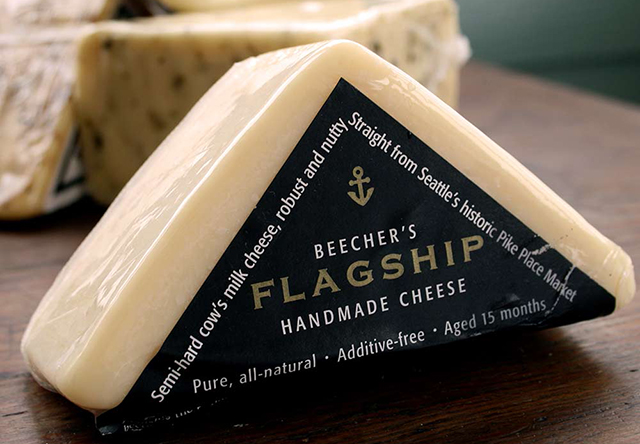
In 2003, Kurt Beecher Dammeier opened Beecher’s Handmade Cheese at the historic Pike Place Market in Seattle. By starting with a mix of Holstein and Jersey milk from local farms and applying traditional methods used by cheesemakers for thousands of years, Beecher’s cheeses are hand crafted in their glass-walled cheesemaking kitchen where people can watch just how it’s done.
 Seven days a week, fresh milk is pumped into the holding tanks at the kitchen. Then the day-long process of cheesemaking begins. Under the skilled direction of the cheesemaker, the milk is pasteurized at 161°F using High Temperature Short Time (HTST). This process kills pathogenic bacteria and improves food safety. After pasteurization, the milk is pumped into the Make Vat, where they add the cultures that give the cheese its eventual identity. For most of Beecher’s cheeses, they use a combination of Cheddar cultures and Gruyere cultures. Between the two, a sharp nuttiness develops, becoming more nuanced and rich in flavor over time.
Seven days a week, fresh milk is pumped into the holding tanks at the kitchen. Then the day-long process of cheesemaking begins. Under the skilled direction of the cheesemaker, the milk is pasteurized at 161°F using High Temperature Short Time (HTST). This process kills pathogenic bacteria and improves food safety. After pasteurization, the milk is pumped into the Make Vat, where they add the cultures that give the cheese its eventual identity. For most of Beecher’s cheeses, they use a combination of Cheddar cultures and Gruyere cultures. Between the two, a sharp nuttiness develops, becoming more nuanced and rich in flavor over time.
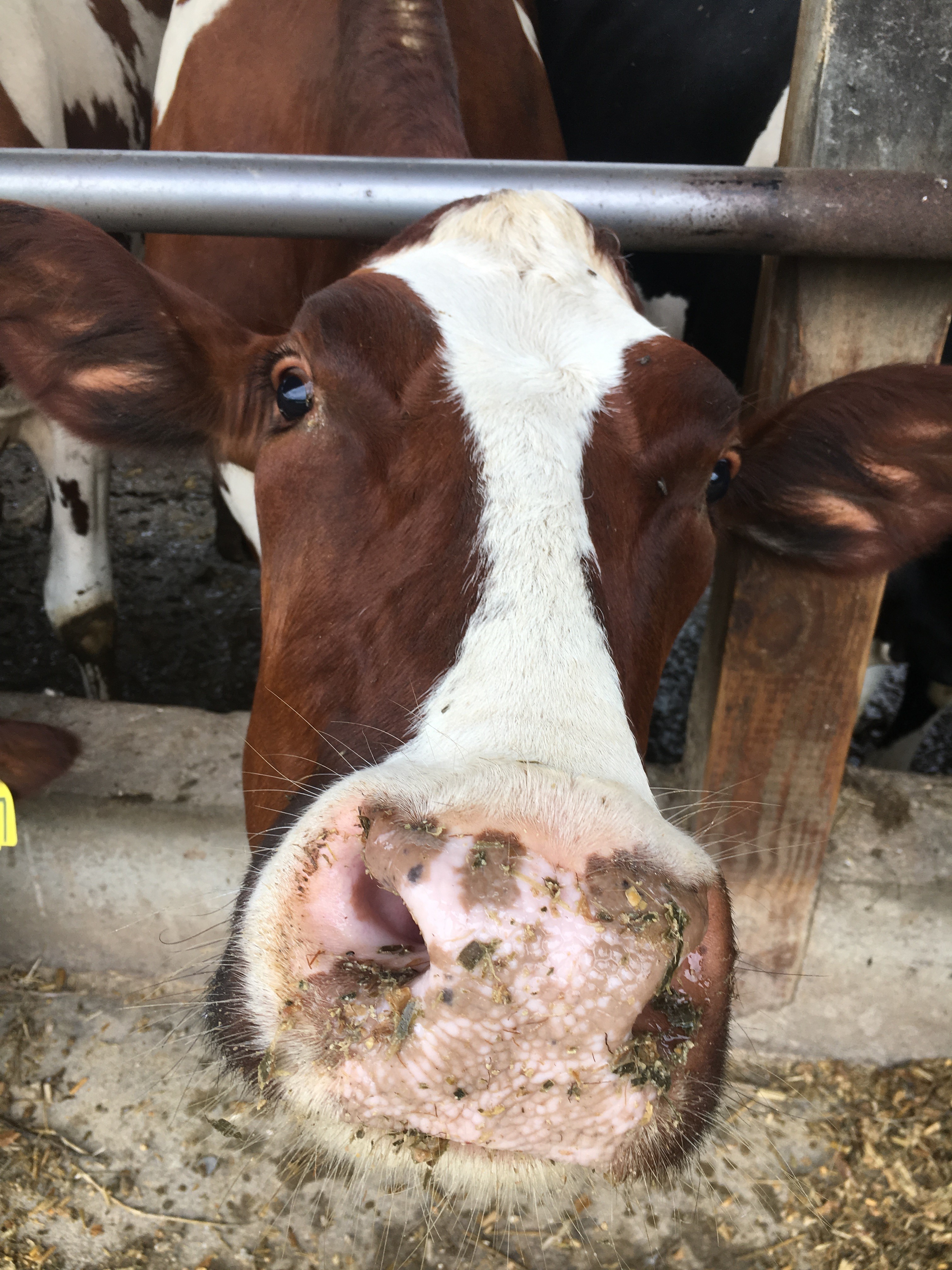 The Make Vat is also where rennet is added to the milk, causing it to coagulate. Once the milk has set into a loose curd, the cheesemakers use square, metal wireframes to cut the curd. This mix of curds and whey are continually monitored for temperature and pH. How quickly the cheese gets to a certain temperature and pH helps determine when the cheesemaking is ready for the next stage in the process. From the Make Vat, the curds and whey are moved onto the Cheddaring Table, where they remove as much whey as possible.
The Make Vat is also where rennet is added to the milk, causing it to coagulate. Once the milk has set into a loose curd, the cheesemakers use square, metal wireframes to cut the curd. This mix of curds and whey are continually monitored for temperature and pH. How quickly the cheese gets to a certain temperature and pH helps determine when the cheesemaking is ready for the next stage in the process. From the Make Vat, the curds and whey are moved onto the Cheddaring Table, where they remove as much whey as possible.
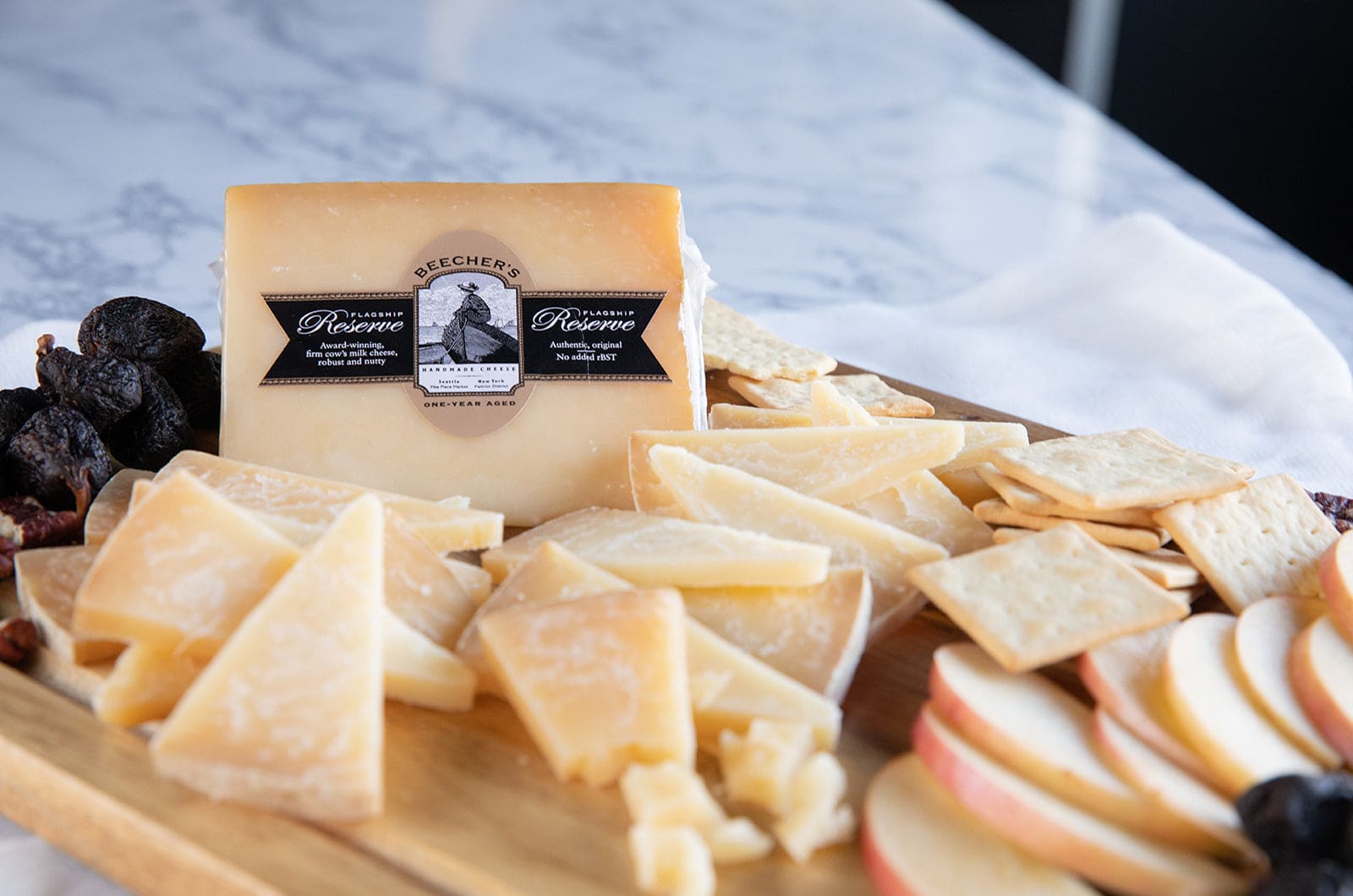 Once the liquid drains, the curds remain heated and immediately begin to knit back together until the they are one solid slab of cheese. The cheese is then cut into loaves using machete-style knives. These loaves are stacked and rotated over time, releasing even more whey from the curd. The loaves are then run through a hopper, chopping them into bite-size pieces. They add salt to these pieces to dehydrate, flavor, and preserve the curds. Next, the cheesemakers scoop them into the cheese molds or hoops. The final stage in cheesemaking is called “affinage,” which means the aging and maturing of cheese. Aging contributes flavor, texture, and complexity to the cheese. The end result is a wholesome, authentic cheese, – full of flavor and high in nutrition. In 2007, Flagship Reserve, Beecher’s clothbound and open-air aged cheese, was awarded 2nd Place Best of Show at the 24th Annual American Cheese Society cheese competition, becoming the highest rated cheddar-style cheese in the country. In 2022, Beecher’s Flagsheep cheese received the highest honor given to American artisan cheeses at the American Cheese Society annual competition – the coveted Best of Show.
Once the liquid drains, the curds remain heated and immediately begin to knit back together until the they are one solid slab of cheese. The cheese is then cut into loaves using machete-style knives. These loaves are stacked and rotated over time, releasing even more whey from the curd. The loaves are then run through a hopper, chopping them into bite-size pieces. They add salt to these pieces to dehydrate, flavor, and preserve the curds. Next, the cheesemakers scoop them into the cheese molds or hoops. The final stage in cheesemaking is called “affinage,” which means the aging and maturing of cheese. Aging contributes flavor, texture, and complexity to the cheese. The end result is a wholesome, authentic cheese, – full of flavor and high in nutrition. In 2007, Flagship Reserve, Beecher’s clothbound and open-air aged cheese, was awarded 2nd Place Best of Show at the 24th Annual American Cheese Society cheese competition, becoming the highest rated cheddar-style cheese in the country. In 2022, Beecher’s Flagsheep cheese received the highest honor given to American artisan cheeses at the American Cheese Society annual competition – the coveted Best of Show.
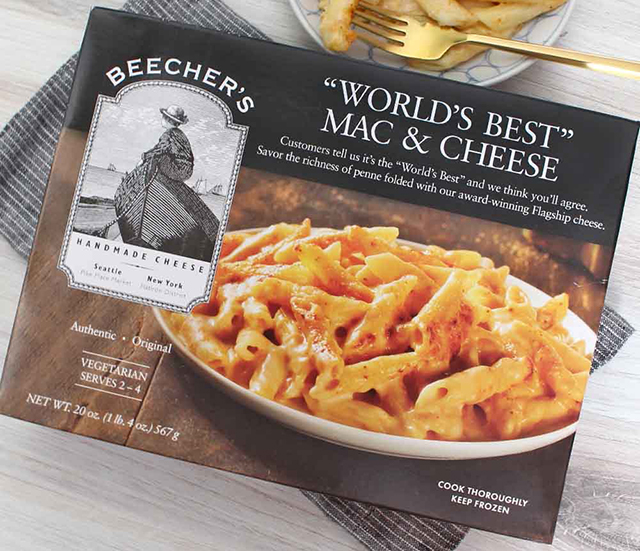 Beecher’s donates a portion of sales to The Beecher’s Foundation, equipping kids with the skills to make informed food choices for life. They provide materials to 4th grade classrooms to provide standards-aligned nutrition education. These fun, interactive, and easy to facilitate lessons including how to be a Food Detective, investigating marketing messages and ingredient lists and learning to make smart choices for their families and communities. Since 2006, The Beecher’s Foundation has helped over 190,000 kids become Food Detectives. Beechers’ does not promote any specific diets or foods, instead believing that each child and family has the right to define what good, nutritious, and culturally appropriate food means to them.
Beecher’s donates a portion of sales to The Beecher’s Foundation, equipping kids with the skills to make informed food choices for life. They provide materials to 4th grade classrooms to provide standards-aligned nutrition education. These fun, interactive, and easy to facilitate lessons including how to be a Food Detective, investigating marketing messages and ingredient lists and learning to make smart choices for their families and communities. Since 2006, The Beecher’s Foundation has helped over 190,000 kids become Food Detectives. Beechers’ does not promote any specific diets or foods, instead believing that each child and family has the right to define what good, nutritious, and culturally appropriate food means to them.
How To Add Farm Stand products to Your Delivery:
Full Circle members – head on over to our online Farm Stand Market to customize your upcoming delivery. Market is open from noon on Thursday until 6pm on your cutoff date. After you confirm your produce items, click the orange button “Confirm and Continue To Other Farm Products” to add farm products to your delivery.
Not part of our farm family? Find out if we deliver to your neighborhood.
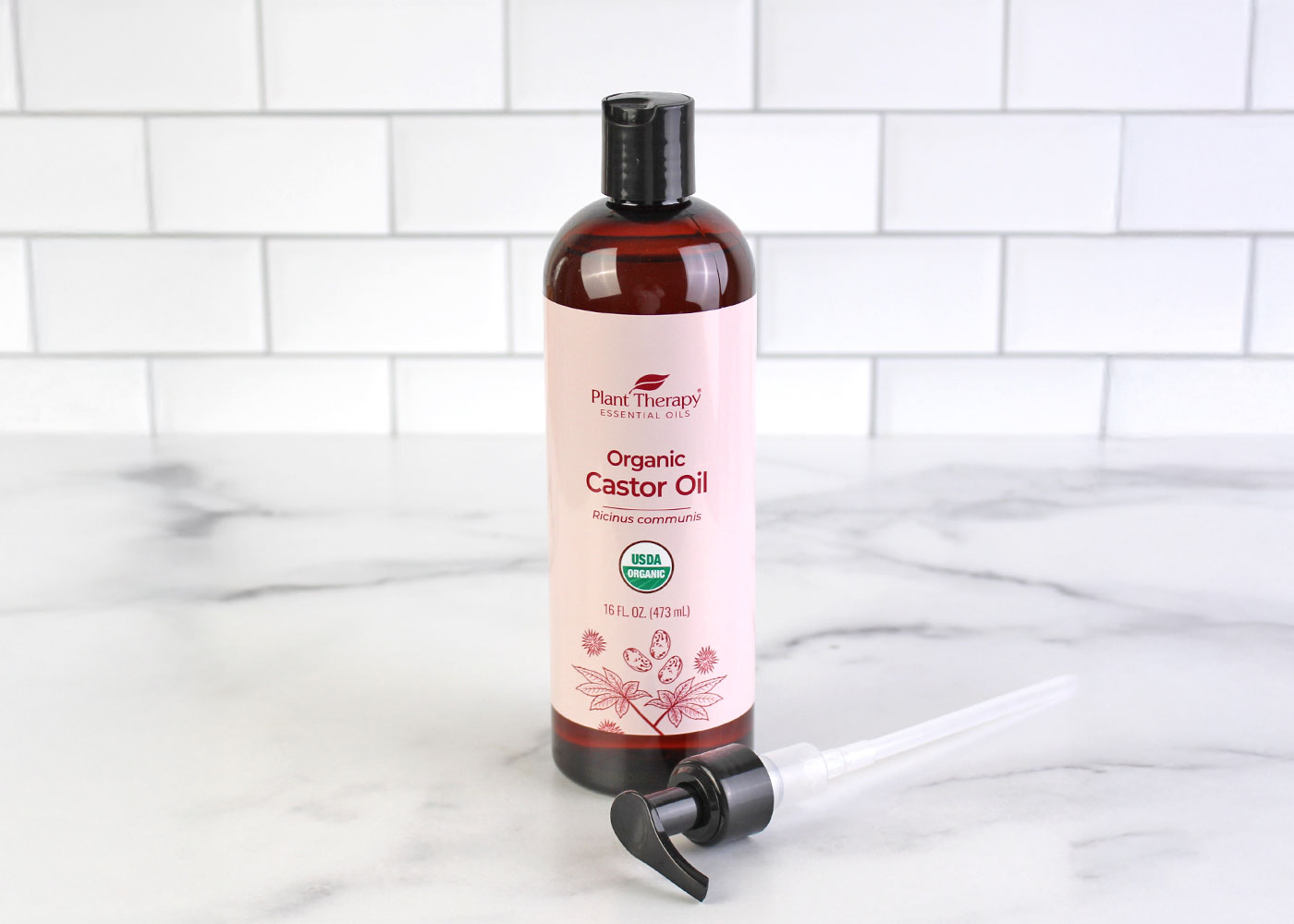

Leave a Reply